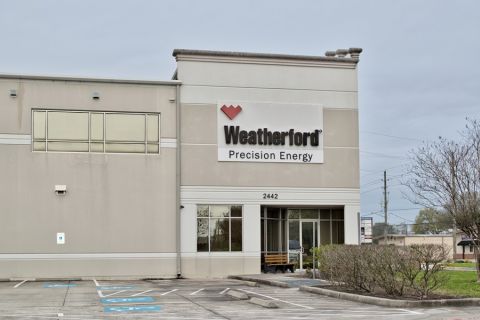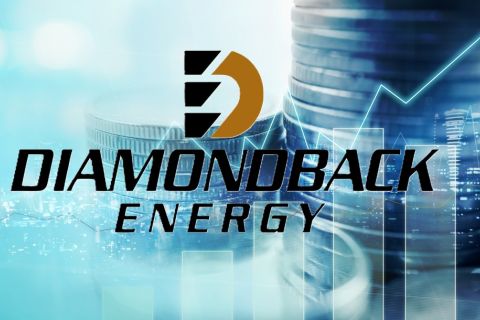U.S. solar companies added a record-setting 32.4 gigawatts (GW) of new electric generating capacity in 2023, accounting for over half of new capacity additions to the grid in a first for the sector.
This is according to a solar market insight report released this week by the Solar Energy Industries Association (SEIA) and Wood Mackenzie. The growth, a 51% increase compared to 2022, is expected to continue as the nation turns to cleaner forms of energy to help lower greenhouse gas emissions, further incentivized by tax credits.
The report showed that every solar market segment—including residential, commercial, utility-scale and solar module manufacturing capacity—reported year-over-year growth to push total installed solar capacity in the U.S. to 177 GW. That number is expected to swell to 673 GW by 2034, providing enough electricity to power over 100 million homes, based on SEIA and Wood Mac estimates.
“A high case for U.S. solar with increased supply chain stability, more tax credit financing and lower interest rates would increase our outlook 17%,” said Michelle Davis, head of global solar at Wood Mackenzie and the report’s lead author. “A low case with supply chain constraints, less tax credit financing and static interest rates would decrease our outlook 24%. Various policy and economic outcomes will have big implications for the U.S. solar industry.”
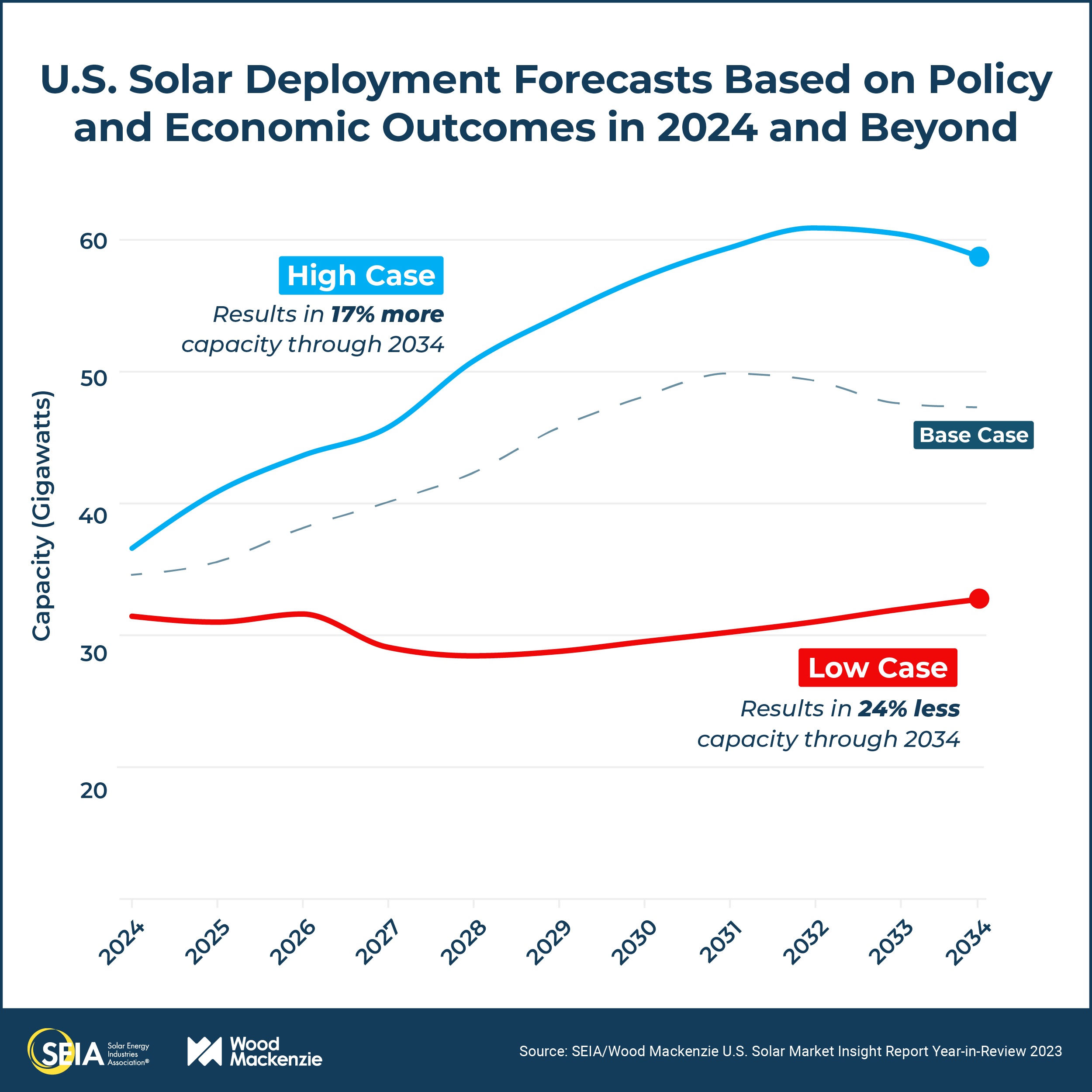
Texas, the nation’s top producer of oil and wind energy, solidified its position as the leader for new solar installations at 6.5 GW. More than half of U.S. states now have at least 1 GW of total installed solar capacity, according to the report.
Here is a look at other renewable energy news.
Energy storage
Toyota to Turn JV Firm with Panasonic into Wholly-owned Subsidiary
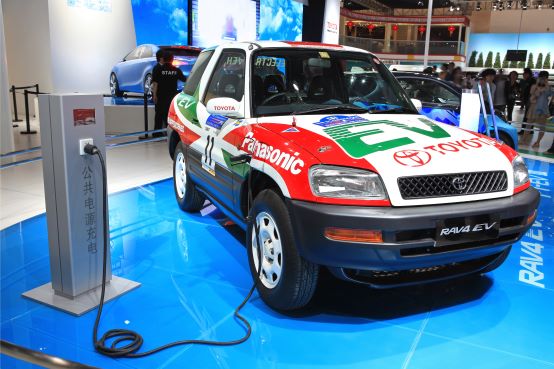
Toyota Motor Corp. and partner Panasonic Holdings Corp. agreed to make their joint venture (JV) firm, Primearth EV Energy Co., the automaker’s wholly-owned subsidiary, Toyota said on March 5.
The acquisition, which is expected in late March, will come as Toyota steps up mass production of batteries for hybrid electric vehicles (HEV). In addition to producing HEV batteries, Primearth will also start producing batteries for battery electric and plug-in hybrid EVs, Toyota said in its news release.
“More competitive batteries will enhance the appeal of Toyota’s electric vehicle offerings and contribute to achieving carbon neutrality through a multi-pathway approach,” the company said.
Aurora: UK, Italy Among Europe’s Hottest Battery Power Storage Markets
Britain, Ireland and Italy are the most attractive markets for investors in battery power storage, energy consultancy Aurora said March 6, citing the lucrative revenue models offered by their governments.
Spain, Germany and Greece are also showing promising signs, according to abstracts from Aurora Energy Research’s Market Attractiveness Report, which covered 24 European countries.
Aurora says it has enabled 1.5 billion euros ($1.6 billion) in battery investment and presented the report in a webinar.
“This market is literally exploding,” said Ryan Alexander, research lead of European power markets at Aurora, adding Europe was catching up with early movers such as Australia and the U.S. “It is moving from being a niche part in the energy system to actually one of the fundamental elements of it.”
Forecasting a seven-fold increase in European battery power storage capacity by 2030, Aurora said this translates into an investment opportunity of over 30 billion euros, rising to almost 80 billion euros by 2050.
Rising from 7.1 GW of installed grid-scale battery capacity in 2023, Aurora sees capacity increasing to 51 GW by 2030 and 98 GW by 2050. Italy alone is aiming for 9 GW by 2030.
Leading countries are offering secure revenue streams for the new capacity and wide wholesale price spreads, allowing battery operators to buy low and sell high. Britain, unlike mainland Europe, lacks strong inter-connectors with neighbors that could help cap prices.
Geothermal
Ormat Signs PPA for Geothermal Power Plant in Guadeloupe
Nevada-based Ormat Technologies on March 4 said it signed a 30-year power purchase agreement with Electricité de France (EDF) to develop a geothermal power plant on the eastern Caribbean Sea island of Guadeloupe.
The new plant, which will be an addition to the existing 15-megawattt (MW) Bouillante geothermal power plant, will be a seawater-cooled binary system using Ormat’s energy converters, the company said in a news release.
“With the addition of the new Bouillante power plant in Guadeloupe and the recent signing of the new 10-MW power plant to be built in Dominica, our total geothermal capacity in the Caribbean region will be 35 MW by the end of 2025,” said Ormat Technologies CEO Doron Blachar. “Further, this long-term agreement to expand generation capacity and supply clean, renewable and reliable power to the island demonstrates our steadfast commitment to sustainable low carbon energy solutions.”
Hydrogen
Gold Hydrogen Begins Well Testing for Ramsay Hydrogen, Helium Project
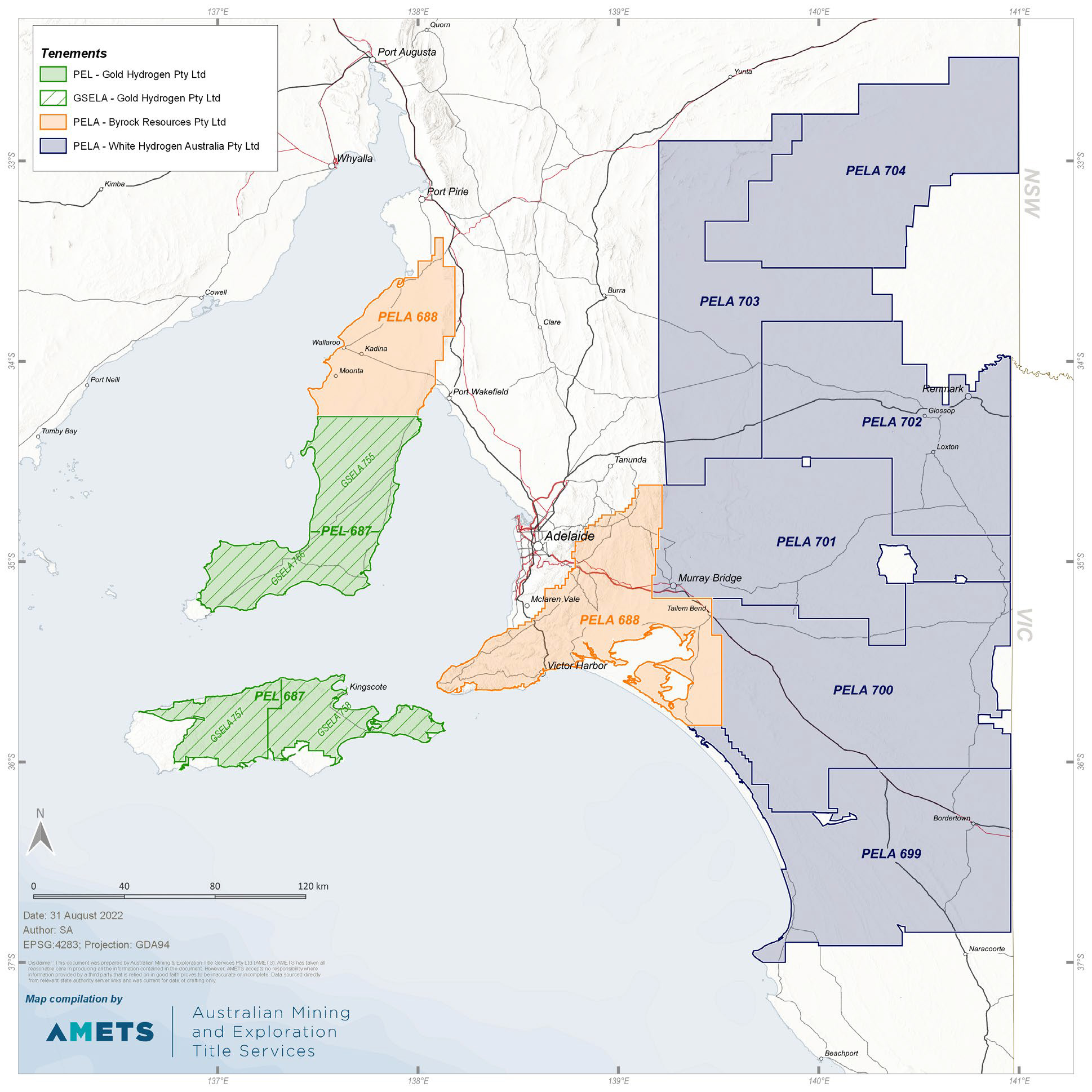
Australia-based Gold Hydrogen has started exploration well testing focused on naturally-occurring hydrogen and helium in a non-petroleum system in South Australia.
The company on March 5 said its Ramsay 1 and Ramsey 2 wells drilled in late 2023 found natural hydrogen with up to 86% purity and helium at up to 6.8% of raw gas.
“The objectives of the exploration well tests are to obtain more samples of both natural hydrogen and helium for further specialist analysis in world-leading laboratories, and to extract both natural hydrogen and helium to surface,” the company said in a news release.
Preliminary technical results from testing are expected by April and will help inform future drilling and well completion designs, a future pilot program and longer-term commercialization planning, Gold Hydrogen said.
The company believes the area, which stretches across Yorke Peninsula and Kangaroo Island on petroleum exploration license 687, could hold an estimated 1.3 MMmt of natural hydrogen.
RELATED
Shell Taps Bloom Energy’s SOEC Technology for Clean Hydrogen Projects
John Cockerill Americas President Talks Hydrogen, Electrolyzers
Solar
Equinor Brings Solar Plant Online in Brazil
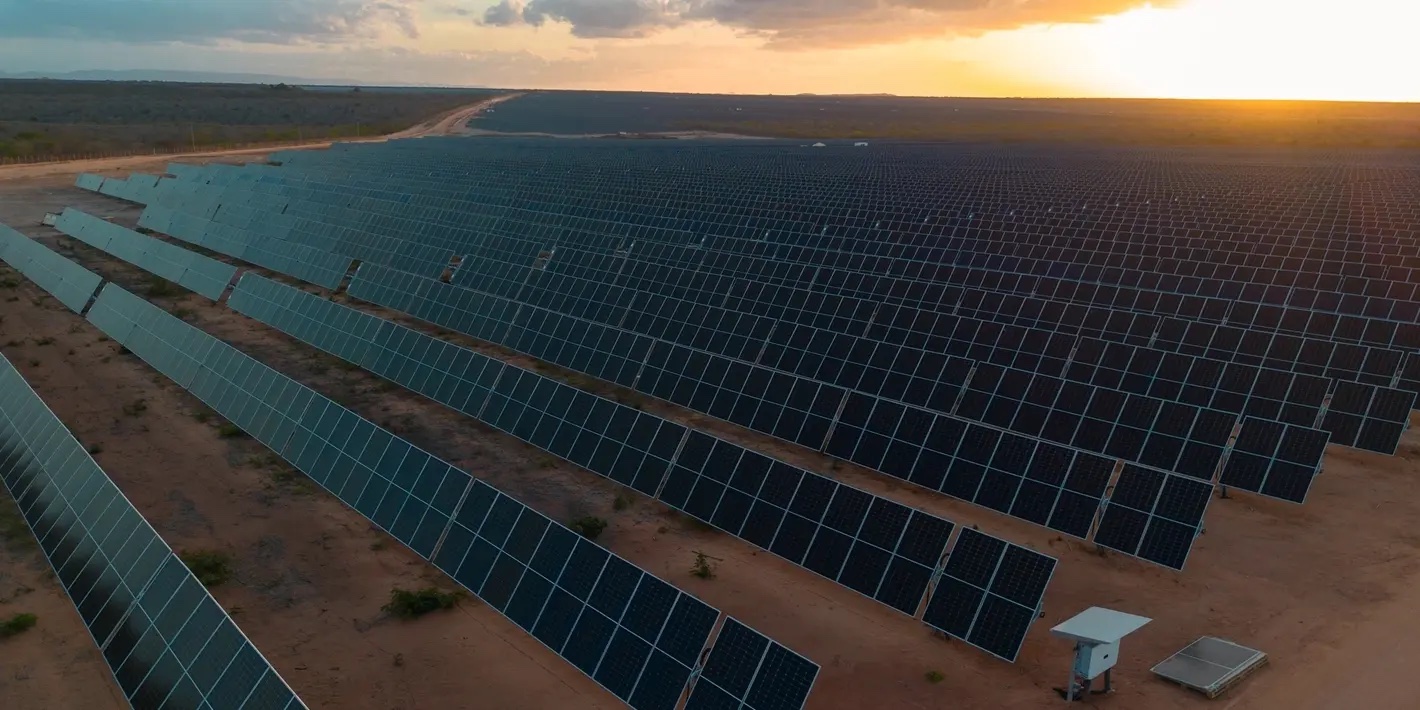
Equinor on March 8 said the 531-MW Mendubim solar plant in Brazil started operations, lifting its equity power production in the country by 30%.
Operated as a joint venture between Equinor, Hydro Rein and Scatec, the solar plant will produce 1.2 terawatt hours of power annually. Alumina supplier Alunorte will purchase about 60% of the power produced at the plant, while the rest will be sold in Brazil’s power market, Equinor said in a news release.
“Equinor has conducted business in Brazil for over two decades, and we see the country as a core area for long-term profitable growth,” said Olav Kolbeinstveit, senior vice president for onshore and markets within renewables at Equinor. “By investing in renewable energy, we are supporting Brazil’s ambitions towards a diverse energy mix and helping to meet the expected power demand growth in the country.”
The solar plant is expected to deliver real base returns in the middle of Equinor’s guided range for renewables of between 4% to 8%, the company said.
Equinor, Hydro Rein and Scatec each hold a 30% interest in the project. Alunorte holds the remaining 10%.
Canadian Solar, Sol Systems Partner to Scale US Module Production
Washington D.C.-based Sol Systems partnered with Canadian Solar Inc. to ramp up solar module production and procurement in the U.S.
As part of the agreement, Canadian Solar said it will supply its N-Type TOPCon (Tunnel Oxide Passivated Contact) solar modules from its Texas facility to Sol Systems. The solar energy company is operating and building more than 2 GW of solar projects valued at more than $2 billion.
“We are thrilled to partner with Canadian Solar to scale the U.S. solar module manufacturing industry and create new American manufacturing jobs,” said Dan Diamond, chief construction officer for Sol Systems. “Canadian Solar’s TOPCon modules boost project economics through higher yields, smaller site footprint and lease costs and lower balance of system costs.”
The solar modules are expected to support Sol’s U.S. project pipeline between 2024 and 2025.
Arevon, Meta Seal Contracts for Solar Energy
Tech conglomerate Meta Platforms, formerly known as Facebook, signed two environmental attribute purchase agreements with Arevon Energy Inc. for energy generated by the 349-MW Kelso Solar project in Missouri, according to a March 5 news release.
The power will be used to help support Meta’s operations in the region.
“We meet 100 percent of our energy demand with renewable power, and we continue to invest in clean energy projects as we grow,” said Urvi Parekh, head of renewable energy at Meta. “This partnership with Arevon decarbonizes our operations and contributes to a more sustainable, resilient energy infrastructure.”
Located in Missouri’s Scott County, Kelso’s first phase is expected to begin operations in fourth-quarter 2025. Second phase startup is scheduled for first-quarter 2026, according to the release.
rPlus Amends PPA, Adding Storage to Utah Renewables Project
Renewable energy developer rPlus Energies on March 6 said it has quadrupled the size of its Green River Energy Project with an amended power purchase agreement with power company PacifiCorp.
The more than $1 billion solar-plus-storage project in Utah, which will be one of the largest systems in the U.S., will now have a battery storage capacity of 1,600 megawatt hours (MWh) instead of 400 MWh. Construction is scheduled to start in second-quarter 2024, rPlus said in a news release.
“After a decade-long, successful partnership, this milestone project marks the third contracted collaboration between rPlus and PacifiCorp,” rPlus CEO Luigi Resta said.
This week’s announcement follows rPlus’ recent securement of an investment of up to $460 million from private investment firm Sandbrook Capital to expand into ownership and operation of its projects.
RELATED
RIC Energy Sells 20 MW of Solar Plants to Luminace
Wind
CIP, LS Cable Sign Contract for Wind Project Off Taiwan
Copenhagen Infrastructure Partners (CIP) selected LS Cable to supply cables for the Feng Miao 1 wind project offshore Taiwan, CIP said in a March 6 news release.
Owned by CIP’s Flagship Fund V, the 500-MW project is in the late development stage, finalizing design and procurement in preparation for financial close, according to the release. Korea-based LS Cable will provide offshore export cables, inter-array cables and onshore export cables from its Korean manufacturing facility for the project.
The contract marks the fourth cable supply arrangement between CIP and LS Cable for offshore wind projects in Asia, the release states.
Hexicon JV Freja Explore Fish Farms at Offshore Wind Sites
Freja Offshore, a JV between Norwegian Mainstream Renewable Power and Swedish Hexicon AB, teamed up with Subfarm to examine how electricity production and fisheries can coexist.
As part of the collaboration, Freja plans to build a wind farm called Mareld offshore Sweden, where it wants to develop a sustainable fish farm.
“The region Västra Götaland needs to triple its electricity production in the coming years to meet the energy needs and offshore wind will play a key role. At the same time, wind power must be able to coexist with other important interests, not least the fishing industry and sea-based food production,” Hexicon said in a news release. “Therefore, Freja Offshore now wants to develop the possibility of running sustainable fish farms in connection with the Mareld wind farm.”
Working with Subfarm, a Norwegian sustainable fishery, plans are to place fish farms—anchored with their own systems—between wind turbine platforms. The fish boxes will be lowered to 50 m–70 m depth and hoisted up to the surface for checks and harvesting, the release states, and then taken by ship to land.
“The technology has been developed to cope with tough weather conditions in the North Sea and is based on methods previously used in the oil and gas industry for decades,” Hexicon said in a news release. “The entire system is controlled from a control station on land.”
Also participating in the project are the Lysekil Municipality, the research institute DHI and the Norwegian industrial cluster Blue Maritime Cluster, the release states.
Norsk Hydro Unit to Buy 80% stake in Wind Power Projects
Norsk Hydro’s renewable energy unit Hydro Rein has agreed with Swedish renewables developer IOWN Energy to buy an 80% stake in a 2.4-GW portfolio of planned wind power projects in Sweden and Norway, it said on March 5.
Hydro Rein and IOWN will enter a long-term partnership to jointly develop 23 projects in Sweden and two in Norway, which are spread across electricity price areas SE2, SE3, SE4 and NO2, Hydro said in a statement.
The two partners aim to make first investments before 2030, Hydro said.
Reuters and Hart Energy Staff contributed to this report.
Recommended Reading
From Restructuring to Reinvention, Weatherford Upbeat on Upcycle
2024-02-11 - Weatherford CEO Girish Saligram charts course for growth as the company looks to enter the third year of what appears to be a long upcycle.
Weatherford M&A Efforts Focused on Integration, Not Scale
2024-04-25 - Services company Weatherford International executives are focused on making deals that, regardless of size or scale, can be integrated into the business, President and CEO Girish Saligram said.
TechnipFMC Eyes $30B in Subsea Orders by 2025
2024-02-23 - TechnipFMC is capitalizing on an industry shift in spending to offshore projects from land projects.
Endeavor Integration Brings Capital Efficiency, Durability to Diamondback
2024-02-22 - The combined Diamondback-Endeavor deal is expected to realize $3 billion in synergies and have 12 years of sub-$40/bbl breakeven inventory.
Patterson-UTI Braces for Activity ‘Pause’ After E&P Consolidations
2024-02-19 - Patterson-UTI saw net income rebound from 2022 and CEO Andy Hendricks says the company is well positioned following a wave of E&P consolidations that may slow activity.



